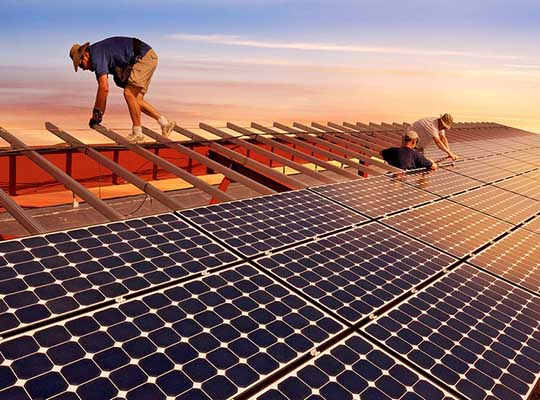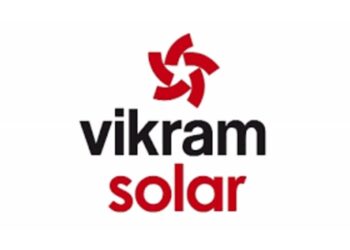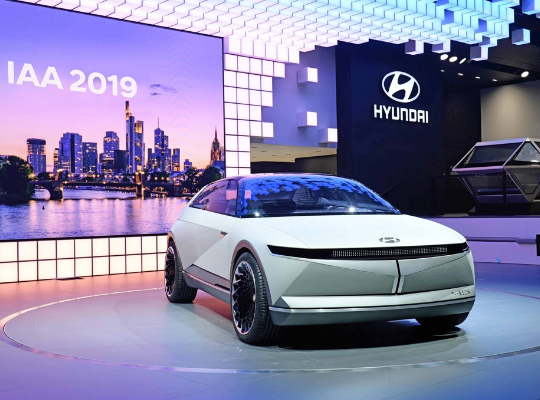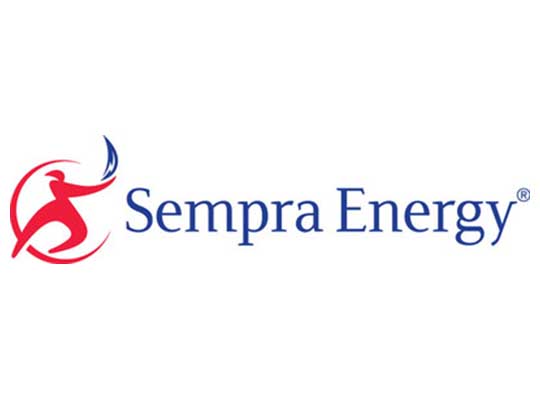WASHINGTON, Dec. 2, 2020 – Developing 247 GW of local rooftop and community solar and 160 GW of local energy storage is the most cost-effective way for the United States to transition to a clean energy system by 2050, while saving consumers up to $473 billion on electricity. This is enough local solar to power over 25% of all U.S. homes. These are among the core findings of a new report – Why Local Solar for All Costs Less: A New Roadmap for the Lowest Cost Grid – issued by Vote Solar, the Coalition for Community Solar Access, and Sunrun.
Using a state-of-the art grid planning tool developed by Vibrant Clean Energy, the analysis goes beyond the limitations of traditional grid planning by leveraging big data and advanced analytics to produce a more complete and inclusive picture of the direct costs and benefits of resources on the grid.
The tool – called WIS:dom-P and developed by Dr. Christopher Clack – analyzes trillions of data points including every potential energy resource and the direct costs and benefits associated with bringing the most cost effective resource mix to the electric grid. The model was recently updated to take into account, and enhance the delivery of, local solar and storage generation located closer to customers on the distribution side of the grid.
“With better models that evaluate resource selection based on their impact on total system costs we see that scaling local solar and storage – along with utility-scale renewables – will save us hundreds of billions of dollars and achieve the lowest cost path to a clean electric grid,” said Jeff Cramer, executive director of Coalition for Community Solar Access. “The analysis shows that President-elect Biden’s clean energy plan – if done right and guided by the latest grid modeling tools – has the potential to save the country hundreds of billions of dollars if it includes scaling local solar and storage. These savings are in addition to the massive societal benefits that come with a grid that’s more local and distributed.”
The main takeaways from the advanced modeling show:
- Deploying at least 247 GW of local rooftop and community solar on the grid would be the most cost-effective way to transition to a clean energy system by 2050. It is also the most cost-effective way to reach 95% emission reductions from 1990 levels.
- A clean electric grid that leverages expanded local solar and storage is $88 billion less expensive than a grid that does nothing different than we’re doing today (no clean electricity mandates and not leveraging expanded local solar and storage). This proves that moving to clean electricity targets can save the country money versus the status quo.
- Under a national 95% clean electricity target, leveraging expanded local solar and storage can save the U.S. $473 billion by 2050 compared to a clean electricity grid that doesn’t expand local solar and storage. Expanding local solar and storage on the distribution system reduces the need for power plants that only run on peak power days. It also better manages and reduces demand on the distribution system by offering more local energy products that customers want, which can increase grid resilience and reduce overall costs on the distribution and transmission grid.
- More local solar unlocks the potential of utility-scale solar and wind. The lowest cost grid requires a lot more utility-scale solar. In fact, retiring fossil-fueled power plants that run infrequently and deploying local storage more efficiently will help integrate 798 GW of utility-scale solar and 802 GW of utility-scale wind by 2050.
- Scaling local solar and storage results in over 2 million local jobs by 2050. The cost analysis accounted for direct costs and benefits only, but local solar and storage brings additional societal benefits to communities such as jobs, increased economic development, increased resilience, and more equitable access to the benefits of renewables.
“This study indicates that the current practice of ignoring (or assuming) distributed-scale resources in utility plans will result in higher costs for customers, higher GHG emissions, and lower job prospects for the industry compared with coordinated planning,” said Dr. Christopher Clack, founder and CEO of Vibrant Clean Energy. “Furthermore, the modeling tools required to provide insight for all stakeholders should include computations that resolve the distribution resources at some granularity to perform analysis on the co-benefits.”
“This effort is a giant leap forward in demonstrating the critical role DERs must play in future system planning to provide efficient, effective and reliable solutions for an aging grid, with evolving customer needs,” said Anne Hoskins, former utility regulator and Chief Policy Officer for Sunrun. “By providing the tools to refresh outdated metrics and thinking in our system planning, we unlock a better energy future for all.”
“Our antiquated, centralized power system disproportionately harms low-wealth families and environmental justice communities. The new, least-cost grid envisioned by this innovative roadmap shows us how we can reinvent our energy infrastructure by redistributing power to local communities,” said Adam Browning, Executive Director, Vote Solar. “Our responsibility now is to ensure that is done equitably, that the voices previously excluded are included, and that the investments required for the new power structure benefit those most harmed by the old one.”
Local solar and storage – part of the group of innovative, affordable technologies sometimes referred to as Distributed Energy Resources (DERs) – are small, distributed facilities that produce and store power closer to the homes and communities where it is being used. The two most common forms of local solar are community solar and rooftop solar, both of which can be paired with battery storage. Community solar, the fastest-growing segment within the solar industry, refers to local solar facilities shared by multiple subscribers who receive credits on their electricity bills for their share of the power produced. Rooftop solar gives people the ability to generate their own power on their own property and store it in a battery for resilience even in the event of grid outages. Both rooftop and community solar help customers lower their monthly utility bills.
CCSA, Vote Solar, and Sunrun call on legislators and regulators to make sure local solar and storage is integrated and optimized into state energy planning using advanced modeling tools like WIS:dom-P and to establish clear and consistent policies and programs that scale local solar and storage right now. The technology is here today; time is of the essence to innovate our system planning so the benefits can be achieved as quickly as possible.
About Vibrant Clean Energy
Vibrant Clean Energy is a nationally recognized energy grid modeling firm based in Colorado. VCE creates computer optimization software to study pathways for energy systems futures. It also performs studies using WIS:dom to provide expertise in new arenas of electrification, decarbonization and variable resources. The mission of VCE is to help facilitate universal, sustainable, and cheap energy for everyone.
About Vote Solar
Vote Solar’s mission is to make solar a mainstream energy resource across the U.S. Since 2002, Vote Solar has been working to lower solar costs and expand solar access. A 501(c)3 non-profit organization, Vote Solar advocates for state policies and programs needed to repower our electric grid with clean energy. Vote Solar works to remove regulatory barriers and implement key policies needed to bring solar to scale.
About CCSA
The Coalition for Community Solar Access (CCSA) is a national Coalition of businesses and non-profits working to expand customer choice and access to solar to all American households and businesses through community solar. Community solar refers to local solar facilities shared by multiple community subscribers who receive credits on their electricity bills for their share of the power produced. Community solar provides homeowners, renters, and businesses equal access to the economic and environmental benefits of solar energy generation regardless of the physical attributes or ownership of their home or business. Community solar expands access to solar for all, including low-to-moderate income customers, all while building a stronger, distributed, and more resilient electric grid.
About Sunrun
Sunrun Inc. (Nasdaq: RUN) is the nation’s leading home solar, battery storage, and energy services company. Founded in 2007, Sunrun pioneered home solar service plans to make local clean energy more accessible to everyone for little to no upfront cost. Sunrun’s innovative home battery solution, Brightbox, brings families affordable, resilient, and reliable energy. The company can also manage and share stored solar energy from the batteries to provide benefits to households, utilities, and the electric grid while reducing our reliance on polluting energy sources.
About Local Solar for All
Local Solar for All’s mission is to create a safer, more affordable, and equitable way to supply power to our communities. The campaign is focused on promoting the benefits of local clean energy production and encouraging federal and state governments to accelerate the development of a more decentralized, distributed energy system. The campaign is being run by solar energy and storage companies, clean energy industry groups, and non-profits including the Coalition for Community Solar Access, Vote Solar, Solar United Neighbors, Sunrun, SunPower, Engie, IGS, and Sunnova.
For more information, visit www.localsolarforall.org.













